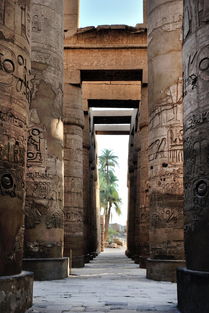Title: Exploring the Architectural Wonders of Nations: A Journey Through Global Signifiers
In the realm of architectural design, each nation stands out with its unique identity, encapsulated in iconic structures that serve as symbols of their history, culture, and modernity. From ancient temples to futuristic skyscrapers, these landmarks tell the story of humanity's creativity and technological advancements. This exploration delves into the most recognizable and influential buildings in different countries, offering a glimpse into their cultural essence.
1、United States - Statue of Liberty: Known as the "Mother of Liberty," this colossal statue on Liberty Island in New York Harbor represents freedom and democracy since its completion in 1886. Designed by French sculptor Frédéric Auguste Bartholdi, it symbolizes the welcoming spirit of the United States to immigrants.
2、Great Britain - Tower Bridge: The British capital's most iconic structure, Tower Bridge spans the Thames River, a fusion of Victorian Gothic and modern engineering. Its opening for boats and distinctive design have become an iconic image of London's skyline.
3、Italy - Colosseum, Rome: An enduring testament to Roman engineering, the Colosseum is a living reminder of the grandeur and power of the Roman Empire. Its elliptical shape and seating capacity for over 50,000 spectators make it a UNESCO World Heritage site.
4、China - The Great Wall of China: Stretching over 13,000 miles, the Great Wall is not just a defense system but a symbol of Chinese resilience and architectural prowess. It's a breathtaking blend of ancient and modern, a testament to the nation's long history.
5、India - Taj Mahal: Built by Mughal Emperor Shah Jahan in memory of his beloved wife Mumtaz Mahal, this mausoleum in Agra is a masterpiece of white marble and Islamic architecture. Its beauty and haunting romance continue to captivate the world.
6、Australia - Sydney Opera House: Designed by Danish architect Jørn Utzon, this architectural marvel is a visual representation of Australia's cultural diversity and innovation. Its unique sail-like form has become an emblem of Sydney and a UNESCO World Heritage Site.
7、Germany - Brandenburg Gate: This neoclassical masterpiece in Berlin stands as a symbol of reunification after the fall of the Berlin Wall. The gate's historical significance and its role in modern German history cannot be overstated.
8、France - Eiffel Tower: This wrought-iron lattice tower, designed by Gustave Eiffel, was initially intended to be temporary but has since become the epitome of Paris and a global symbol of France. Its height and intricate engineering showcase the country's engineering prowess.
9、Brazil - Christ the Redeemer: Located in Rio de Janeiro, this towering statue gazes over the city, a symbol of faith and Brazilian optimism. Constructed in 1931, it's one of the world's largest art sculptures.
10、Japan - Tokyo Skytree: With its two towers reaching over 1,600 feet, Tokyo Skytree redefines the skyline of the bustling metropolis. A symbol of technological advancement and urban harmony, it's a beacon of modern Japanese architecture.
These architectural wonders not only stand as physical representations of their nations but also resonate with the values and aspirations that define them. They are a testament to the creativity, ingenuity, and cultural heritage that each country brings to the world stage. As architects, we are privileged to design and contribute to these legacies, ensuring they remain a source of inspiration for generations to come.











